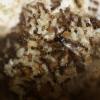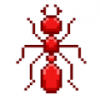- Formiculture.com
- Forums
- Gallery
- Members
- Member Map
- Chat

Protein proportion
Started By
Mdrogun
, Sep 24 2015 4:47 PM
11 replies to this topic
#1
 Offline
-
Posted September 24 2015 - 4:47 PM
Offline
-
Posted September 24 2015 - 4:47 PM
I know that the amount and kind of protein you feed solenopsis determines how many majors they get. I was wondering if this applies to all polymorphic ants. Does anybody have experience controlling the size of ants through the protein given to them?
Currently Keeping:
Trachymyrmex septentrionalis
Pheidole pilifera
Forelius sp. (Monogynous, bicolored) "Midwestern Forelius"
Crematogaster cerasi
Pheidole bicarinata
Aphaenogaster rudis
Camponotus chromaiodes
Formica sp. (microgena species)
Nylanderia cf. arenivega
#2
 Offline
-
Posted September 24 2015 - 5:16 PM
Offline
-
Posted September 24 2015 - 5:16 PM
No idea
#3
 Offline
-
Posted September 24 2015 - 9:56 PM
Offline
-
Posted September 24 2015 - 9:56 PM
I know that the amount and kind of protein you feed solenopsis determines how many majors they get. I was wondering if this applies to all polymorphic ants. Does anybody have experience controlling the size of ants through the protein given to them?
All I know for certain is that the more protein available, usually the more eggs the queen will produce and the more brood they will have. More Food= More Growth.
#4
 Offline
-
Posted September 24 2015 - 11:16 PM
Offline
-
Posted September 24 2015 - 11:16 PM
I've heard that sometimes the ants simply get smaller instead of reduced numbers but idk.
#5
 Offline
-
Posted September 25 2015 - 6:09 AM
Offline
-
Posted September 25 2015 - 6:09 AM
in all polymorphic ant species, the amount of protein given to the female larvae will either restrict or allow the flow of a certain hormone that plays a major role in development. i believe this is serotonin. however more protien does not always equal more majors. supply and demand plays a key role as well, if the colony has very little need for majors and needs many minors, less majors will be produced
#6
 Offline
-
Posted September 25 2015 - 6:24 AM
Offline
-
Posted September 25 2015 - 6:24 AM
in all polymorphic ant species, the amount of protein given to the female larvae will either restrict or allow the flow of a certain hormone that plays a major role in development. i believe this is serotonin. however more protien does not always equal more majors. supply and demand plays a key role as well, if the colony has very little need for majors and needs many minors, less majors will be produced
So how would you have a species like Pheidole produce more majors or have a large need for majors?
- ctantkeeper likes this
Currently Keeping:
Trachymyrmex septentrionalis
Pheidole pilifera
Forelius sp. (Monogynous, bicolored) "Midwestern Forelius"
Crematogaster cerasi
Pheidole bicarinata
Aphaenogaster rudis
Camponotus chromaiodes
Formica sp. (microgena species)
Nylanderia cf. arenivega
#7
 Offline
-
Posted September 25 2015 - 8:20 AM
Offline
-
Posted September 25 2015 - 8:20 AM
I have also read (can't remember if it was substantiated by research) that major production may be influenced by outside threats. I can tell you that major and minor production exploded with my Pheidole after regularly feeding them crickets.
Camponotus vicinus, Crematogaster 1, Crematogaster 2, Formica francoeuri, *, *, Myrmecocystus testaceus, Novomessor cockerelli, Pheidole hyatti, Pogonomyrmex californicus, Pogonomyrmex rugosus, Solenopsis invicta
#8
 Offline
-
Posted September 25 2015 - 12:30 PM
Offline
-
Posted September 25 2015 - 12:30 PM
Thanks Foogoo
Currently Keeping:
Trachymyrmex septentrionalis
Pheidole pilifera
Forelius sp. (Monogynous, bicolored) "Midwestern Forelius"
Crematogaster cerasi
Pheidole bicarinata
Aphaenogaster rudis
Camponotus chromaiodes
Formica sp. (microgena species)
Nylanderia cf. arenivega
#9
 Offline
-
Posted September 25 2015 - 2:01 PM
Offline
-
Posted September 25 2015 - 2:01 PM
I have also read (can't remember if it was substantiated by research) that major production may be influenced by outside threats. I can tell you that major and minor production exploded with my Pheidole after regularly feeding them crickets.
Pheidole majors fight? From what I seen of the North American type, they cower in times of trouble. Instead they are living saws, cutting up food and materials. The reason the majors may have been increased in production with crickets may be majors are needed to cut up insects.
Edited by William. T, September 25 2015 - 2:01 PM.
- LC3 likes this
Species I keep:
1 Lasius cf. Neoniger 30 workers
1 Camponotus sp. 15 workers
20 Tetramorium SpE 30 workers
1 T. Sessile 200 workers
#10
 Offline
-
Posted September 25 2015 - 2:15 PM
Offline
-
Posted September 25 2015 - 2:15 PM
Pheidole majors fight? From what I seen of the North American type, they cower in times of trouble. Instead they are living saws, cutting up food and materials. The reason the majors may have been increased in production with crickets may be majors are needed to cut up insects.
You're right, that could be it too. I was thinking of Camponotus, which I usually see their nest openings surrounded by majors.
Camponotus vicinus, Crematogaster 1, Crematogaster 2, Formica francoeuri, *, *, Myrmecocystus testaceus, Novomessor cockerelli, Pheidole hyatti, Pogonomyrmex californicus, Pogonomyrmex rugosus, Solenopsis invicta
#11
 Offline
-
Posted September 25 2015 - 2:39 PM
Offline
-
Posted September 25 2015 - 2:39 PM
in all polymorphic ant species, the amount of protein given to the female larvae will either restrict or allow the flow of a certain hormone that plays a major role in development. i believe this is serotonin. however more protien does not always equal more majors. supply and demand plays a key role as well, if the colony has very little need for majors and needs many minors, less majors will be produced
So how would you have a species like Pheidole produce more majors or have a large need for majors?
major will be produced if the colony has a need for them, if they are worth exhausting resources on and if the colony even has those resources. my best advice would be to offer insects with high fat content like termites and especially wax worms cut into sections. however, this will only give them the tools to create larger worker castes, but there is no garentee whether they will use it for that purpose. mature colonies are more likley to produce larger workers due to their large amount of scouts and foragers
#12
 Offline
-
Posted September 25 2015 - 2:51 PM
Offline
-
Posted September 25 2015 - 2:51 PM
in all polymorphic ant species, the amount of protein given to the female larvae will either restrict or allow the flow of a certain hormone that plays a major role in development. i believe this is serotonin. however more protien does not always equal more majors. supply and demand plays a key role as well, if the colony has very little need for majors and needs many minors, less majors will be produced
So how would you have a species like Pheidole produce more majors or have a large need for majors?
major will be produced if the colony has a need for them, if they are worth exhausting resources on and if the colony even has those resources. my best advice would be to offer insects with high fat content like termites and especially wax worms cut into sections. however, this will only give them the tools to create larger worker castes, but there is no garentee whether they will use it for that purpose. mature colonies are more likley to produce larger workers due to their large amount of scouts and foragers
Thanks, you said that North American Pheidole Majors don't fight. What Pheidole Majors do fight?
Currently Keeping:
Trachymyrmex septentrionalis
Pheidole pilifera
Forelius sp. (Monogynous, bicolored) "Midwestern Forelius"
Crematogaster cerasi
Pheidole bicarinata
Aphaenogaster rudis
Camponotus chromaiodes
Formica sp. (microgena species)
Nylanderia cf. arenivega
0 user(s) are reading this topic
0 members, 0 guests, 0 anonymous users


















